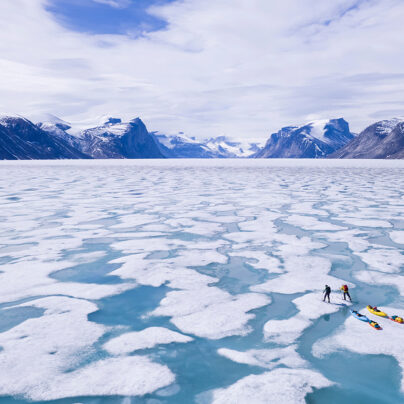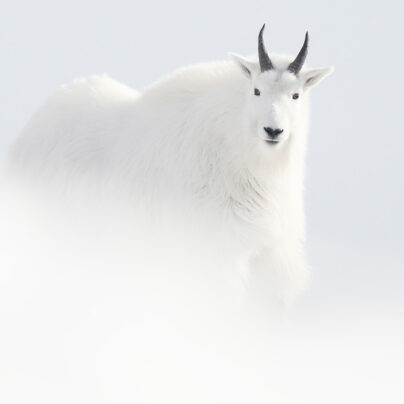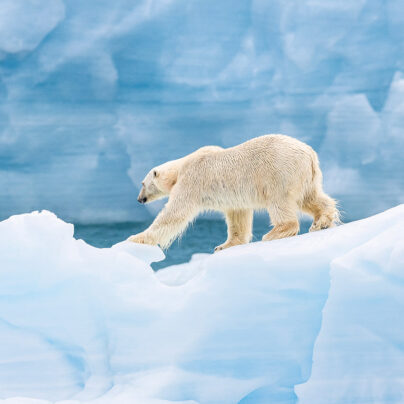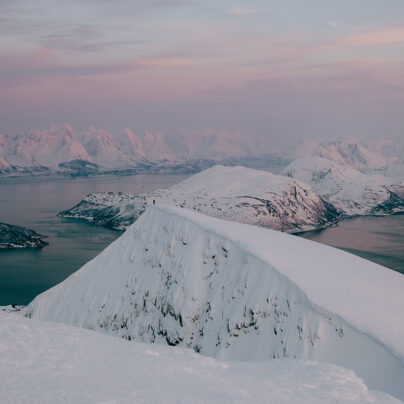Following Scott
By Ben Saunders | Written by Jamie Maddison
N69° 05’ 58.3”, W029° 55’ 13.1”
“Tarka and I joked last night that were it a prison cell, our tent would break almost every human rights convention going. The floor space we share isn’t much greater than the size of a pool table. There’s barely enough headroom to kneel up (I’m typing this sat cross-legged and my head is about an inch from the top of our fabric ceiling). We have no running water, no lavatory (though we do share a pee bottle at night) and if we want electricity we have to go outside to tie a solar panel to the roof.”
I had always been outdoorsy, always loved endurance sport; I used to race bikes and that sort of thing. But the polar world is where my heart really lies. My first proper polar expedition was in 2001 – I was 23 at the time – with Pen Hadow. Looking back, he was an instrumental character – my polar mentor – and that trip was very much my apprenticeship. We set out from the north coast of Russia in spring of that year, late February, to try and reach the geographic North Pole unsupported. Looking back at that voyage now, I was pretty naïve about how big a challenge I’d signed myself up for. I wasn’t completely wet behind the ears at the time mind, with some ski touring experience in Norway and a lot of trekking, climbing and endurance-based stuff in the UK. So I knew I was a sucker for outdoor punishment, but I hadn’t quite realised how tough the Arctic Ocean was going to be straight from day one. A helicopter had dropped us off – two of us, in the middle of nowhere – it was in the low -40°Cs and we were on the ice for the following two months completely unsupported. To top it all off we didn’t actually reach the North Pole.
N69° 04’53.5”, W029° 51’ 45.4”
“The bad weather that was forecast to hit us today wasn’t all that bad in the end, and Tarka and I spent most of today skiing though low cloud and poor visibility, with a cheeky bit of breeze that would have been far more problematic if it hadn’t been at our backs. We’re tucked up in our sleeping bags again now and the stove is roaring away as I type this. We’ve got freeze-dried lamb tagine on the menu this evening, and all’s well here at 69 degrees north, about 2,000m above sea level. We’re planning a big day tomorrow so I’d better sign off now and give Tarka a hand in the catering department…”
In some ways that first trip was an enormous cock up. It was certainly a very, very steep learning curve. But I look back at it now, with my rose-tinted glasses on, as a worthy apprenticeship, a first step on the long path I’ve walked hauling very heavy things for very long distances across some of the frozen bits of the world. Yet at the time it felt like a complete thrashing at the hands of Arctic Ocean. We suffered like dogs on that trip; we lost a lot of weight and I had a frostbitten toe. On top of that, Iridium, the only satellite network that works over the polar regions, had gone bust that year so we had no sat phone and virtually no means in which to contact the outside world for eight weeks. We had no books, no music; it was a very low-stimulus expedition. In short, it was completely miserable. And yet, I think somewhere out there on the ice, a screw came loose in my head and from then on out I began to think that the polar regions were a pretty exciting place to hang out.
The immediate aftermath of that expedition, however, left me utterly knackered and depressed. The trip had been really, really hard. It took me a while to realise actually, I am quite grateful for the journey’s outcome. It would almost have been too easy to have got there the first time around. I came away with a huge list of things I needed to work on, do better at, learn more about and improve upon. And looking back, it equipped me with so many of the skills that are going to be vital setting out on the Scott Expedition.
We had no books, no music; it was a very low-stimulus expedition. In short, it was completely miserable. And yet, I think somewhere out there on the ice, a screw came loose in my head and from then on out I began to think that the polar regions were a pretty exciting place to hang out.
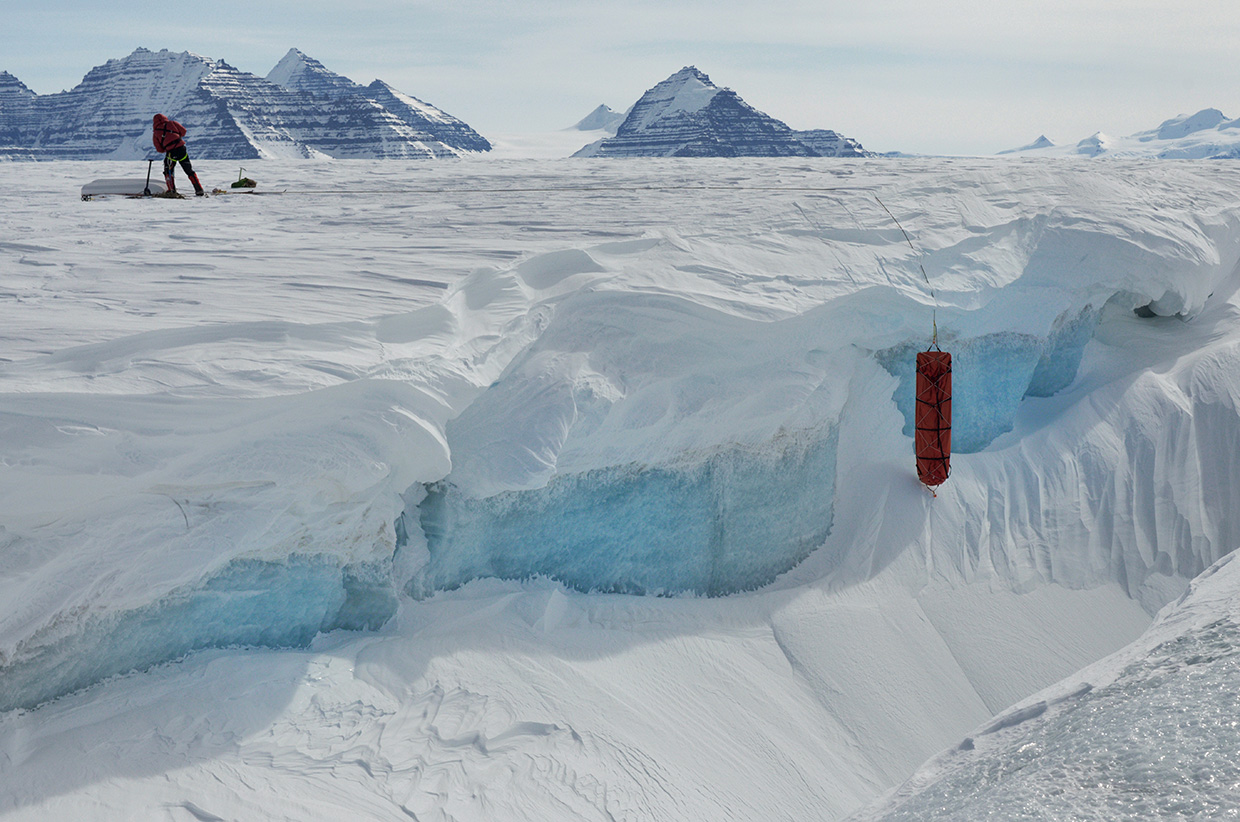
N69° 09’ 50.5”, N030° 05’ 17.7”
“Today was a belter, though it didn’t start with an awful lot of promise. We woke up in the minus twenties to a tent covered in hoarfrost, both lying in our sleeping bags knowing that the first one to kneel up and reach for the pee bottle would trigger a miniature snowstorm.”
I returned to the Arctic Ocean in 2004, skiing solo to the North Pole along the same route Pen and I had taken three years previously. I was still only 26 at the time. Since then, I’ve been undertaking expeditions for nearly a decade on the Arctic Ocean and Greenland. Yet, since I was 17, there’s been a dream ticking away in the back of my mind of doing a really big expedition in Antarctica. What has fascinated me above all else is the fact that Captain Scott’s last journey hasn’t been finished yet; no one has repeated it and therefore no one has walked from the very edge of Antarctica to the South Pole and back again. In fact, no one has even attempted Scott’s journey. It just seemed incredible to me that despite all that we’ve learnt in the century since Scott – about everything from Vitamin C to satellite phones and solar panels – that no one has tried to complete what is surely one of the most iconic polar journeys of all time.
Nowadays there seems to be a misconception that’s it all been done. Of course things are so completely different to a century ago when Scott and his men were sailing away from home, for years at a time with no hope of rescue, no communication and heading for the most part into what was genuinely unknown territory. A hundred and one years ago we knew more about the surface of the moon than Antarctica; it was truly terra incognita. That’s very different now, with our modern-day access to satellite imagery and airplane photography. These days your granny can go on a cruise to Antarctica; if you’re a wealthy enough tourist you can fly to the South Pole for a day, have a glass of champagne and fly back again. It’s the same for the North Pole.
Things are immeasurably different to how they used to be. We can’t change that. But, at the same time, the fact of the matter is that Captain Scott and his four teammates covered nearly 1,600 miles before they died. No one has eclipsed that journey without support – without kites, vehicles, dogs or external assistance; no one has walked further than they did in that environment. That human achievement is an extraordinary part of Scott’s legacy and it is the challenge I’ve become fixated on attempting.
N68° 53’ 50.8”, W029° 43’ 27.4”
“It was flippin’ windy last night and I don’t think Tarka or I got a great deal of sleep. At times I lay awake wondering if the people that sewed the tent’s panels together realised quite how much faith and hope was hanging on their rows of stitching. And at times I would nod off in the thundering din only to be woken up again by a shower of hoar frost, shaken loose from the roof of the tent.”
Planning for the Scott Expedition started in the vaguest sense about ten years ago. It originally began with a great friend of mine, Tony Haile. It was Tony who started the groundwork on this and looking into the reasons why Scott’s expedition hasn’t been repeated. We found two big reasons: the first was the physiological challenge; how do you train for something like this, nutritionally how do you fuel yourself for this kind of expedition? In that sense, their journey was unprecedented; no one has walked that distance in those sorts of conditions, before or since the Terra Nova attempt, with the only exception being Shackleton’s near-successful Nimrod Expedition, three years prior to Scott’s Terra Nova journey.
The second challenge is that logistically the journey is extraordinarily complex. Figuring out that part of the puzzle has taken years and we’ve tried a whole load of options. The challenge has been getting a big enough time window; this journey is going to take least a hundred days and that places us outside the normal seasonal timeframe that’s commercially catered for. The result of that is, as soon as you start looking at bespoke logistics in Antarctica, it becomes an incredibly complex camping trip.
Back at the start Tony and I thought the expedition would take about a year to plan; that we’d do it and then Tony would go back to work and I’d carry on with something else. In 2005, after more than two years of planning, broke and desperately trying to figure out how we could make this happen, Tony – quite sensibly – decided he’d had enough and went and got a sensible job. He’s now working in New York and is a CEO of a big technology company over there. I suspect he could see back then what I was too slow to realise, that the Scott Expedition was going to take a very long while just to get off the ground. Part of me wonders if, back then, I realised how much effort and stress it would take just to get to the point we’re at now – and I haven’t even started the expedition yet – whether I’d have carried on down this path. I’ve had this tunnel-vision focus for the best part of a decade now, and it’s taken a great deal of sacrifice to make this happen.

N68° 53’ 50.8”, 029° 43’ 27.4”
“One of the principle reasons for this trip to Greenland is to test new equipment and technology that might increase our chances of success in Antarctica, and to fine tune some of the gear, clothing and food that we were already intending to take with us.”
I got back from Greenland last night. I have just finished a two-week training expedition with my teammate Tarka. Even though we’ve known each other for 12 years, Tarka and I have never actually done a big trip together, so this was the first proper chance to see how our personalities would function together on the ice. Thankfully it went really well! Yet we didn’t go to Greenland specifically to test ourselves, rather to field-test and evaluate some of the specific bits of equipment and technology that we’re thinking of taking to Antarctica. As with any big expedition it’s good to have a practice run, going over the day-to-day routine; getting a tent up, melting enough snow for us to both have drinking water, when to eat through the day and how much exactly you’ll need to consume. There was a lot on the tech side of things as well, sending images and blog posts back and testing the new Intel technology we’ll be using in Antarctica to stay in touch. In many ways this was the last chance we’d have to test everything in proper polar conditions, ready for the upcoming expedition.
Every day in Greenland we’d practice our routine. It normally took us about an hour and half between waking up and actually starting to move. We’re pretty speedy in the mornings, so we’d get up, get the stove on – we’d have melted water the night before – then boil the water for the hot drinks for the day, have breakfast and take the tent down. We don’t really have an average distance set for us for the Scott Expedition, as the weights of the sledges will vary so enormously across the length of the trip. We’re unsupported so we’ll be pulling everything at the very start, about 200 kilos each, for roughly eight to 10 hours a day on the move. Therefore we’ll be very, very slow at the start of the journey. But we’re leaving depots on the outward leg, so our sledges will get lighter in big chunks. Then we’re skiing back to the coast from the Pole between depots so we’ll never have heavy loads on the way home and should therefore be travelling a little more swiftly. But although there’s some science to this, I find myself operating on educated guesswork for a lot of the time. No one’s ever set out from that point pulling that much weight before, there’s no precedent for it; only three contemporary expeditions have set out from Ross Island in the past twenty years. There is a lot that remains ambiguous, and in many ways it’s still genuinely a journey into the unknown, in a human sense if not in a geographical one.
N69° 03’ 28.0”, W029° 45’ 37.8”
“We skied through about fifteen days in one today: the weather kept changing on us, the wind spinning around and poking us from different directions, roaring at us one moment and then vanishing completely the next, as if the grey clouds blew from mouths that kept clamping closed to tightly pursed lips and then opening up to yawn lazily at us.”
I think there’s often a tendency to get caught up in the minutiae of organisation, especially when you are dealing with a project of this scale and ambition. It is very hard not to find yourself lost amongst the planning of the trip, the endless spreadsheets and piles of kit and all the work that’s got to be done. Yet there are moments that bring the awesome reality of the project back into sharp focus, and I had a fair few of these revelations towards the end of the Greenland trip.
The first week into any expedition I usually find myself a bit at sea, in a slight state of shock about living in a tent, peeing in a bottle again and not washing. But although my head usually starts off in London mode, I find that in the second week I get into the journey and start to enjoy it. We had all sorts of weather in Greenland, all sorts of conditions. The Watkins Mountains are a stunning place, and the moments of appreciation come flooding in when you take the time to stop and admire the position you find yourself in.
I remember sticking my head out of the tent one night and seeing the low sun gently framed by mountains. It’s moments like that that remind me why I’ve been working away at this expedition for a decade now. At that sight I experienced a feeling that was at once, both very new to me and incredibly old. As if I’d somehow forgotten – through all that paperwork and PowerPoint – that at the heart of all of this work lie the beautiful landscapes of the polar world, the privilege and joy of spending so much of my life in areas of genuine wilderness, and the incredible sense of history and purpose I’ve been lucky enough to experience in pursuing this dream.

Ben Saunders is the third in history to ski solo to the North Pole and holds the record for the longest solo Arctic journey by a Briton. He is a Brand Ambassador for Land Rover and Intel and an acclaimed motivational speaker, described by TED as “A master storyteller”. He is represented internationally as a speaker by IMG and The London Speaker Bureau.
You can follow The Scott Expedition online at www.scottexpedition.com, or Twitter, You Tube, Facebook and Instagram.




